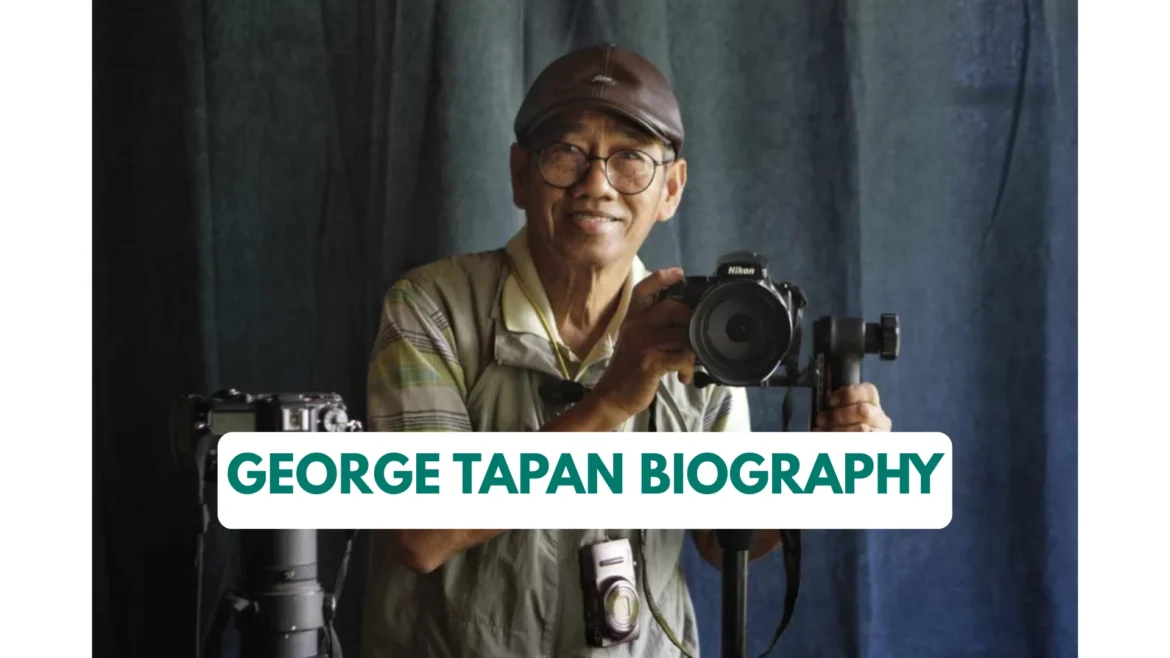George Tapan is widely celebrated as one of the Philippines’ most influential travel photographers. Over a career that spans decades, Tapan has captured landscapes, cultural moments, and intimate slices of Filipino life with a combination of sensitivity and compositional boldness that earned him both national fame and international awards.
In this in-depth biography you’ll find his early life, career milestones, signature works (including his National Geographic-winning image), awards, teaching efforts, exhibitions, and practical takeaways from his creative approach.
Early life and how he found photography
George Tapan’s story begins modestly. Born and raised in the Philippines, he first encountered photographic equipment and darkroom processes in his youth—a formative exposure that eventually led him to pursue photography professionally. Early on Tapan worked in various photography-related roles, including assignments connected to the film and publishing industries, before focusing on travel and documentary photography. His background in practical, hands-on photography and his curiosity about culture and place set the stage for the signature images he would later create.
The breakthrough: Into the Green Zone and National Geographic recognition
A defining moment in Tapan’s career came when he won first place in the 2011 National Geographic Photo Contest (Places category) with his image titled “Into the Green Zone”—a powerful seascape with a dramatic rainbow and a lone figure that captured both scale and quiet human presence. That award introduced his work to a far wider, global audience and is often credited with cementing his international reputation.
Major awards and honors
- Two Pacific Asia Travel Association (PATA) Gold awards (for tourism photography).
- ASEAN tourism-related awards and other regional honors recognizing his impact on visual tourism promotion.
- The National Geographic Photo Contest (Places category) win in 2011.
These awards reflect not just technical excellence but also his consistent ability to translate place and culture into images that speak to wide audiences and tourism stakeholders.
Signature style and themes
George Tapan’s photographs often combine sweeping landscapes with human-scale details. Key hallmarks of his work include:
- Strong sense of place: travel essays rooted in geography and local practice.
- Use of light and color, and compelling monochrome work.
- Respectful, observational portraiture that avoids sensationalism.
- Compositional clarity with layered elements and human scale.
This aesthetic makes his images suitable for travel features, tourism marketing, and gallery exhibitions alike.
Teaching, workshops, and influence
Beyond shooting, Tapan has been active in passing on his craft. He has run workshops and masterclasses for aspiring travel photographers and has served as a speaker and mentor in photography circles. His workshops typically emphasize fieldcraft—how to read light, connect with subjects, and make editorial images that work in print and digital media.
Exhibitions and retrospectives
George Tapan’s work has been included in numerous exhibitions, and in recent years curators have mounted retrospectives celebrating his decades-long contribution to Philippine visual culture. A notable example is a retrospective exhibition titled George Tapan: 50 Years Through His Lenses, which presented a cross-section of his travel images and documentary projects.
Notable projects and published features
Tapan’s images have been published in local and international magazines, tourism campaigns, and on editorial pages. His work is often used to promote Philippine tourism—featuring islands, festivals, community life, and natural landmarks—helping both tourists and locals see well-known places anew. Editors praise his ability to make the familiar feel fresh while preserving context and dignity.
The man behind the camera: personality and approach
Colleagues describe George Tapan as disciplined, curious, and deeply respectful of the people and places he photographs. He approaches assignments not merely as opportunities for pretty images, but as responsibilities to show context and story. His patience—waiting for the right light or the right expression—has been central to his success.
Legacy and why George Tapan matters
George Tapan’s legacy is twofold: his outstanding body of images that document Philippine landscapes and culture for both domestic and international audiences, and his role as a teacher and public figure in photography. In a media age where images travel fast and impressions matter, his carefully crafted photographs remain models of how to represent place responsibly—beautifully, ethically, and with narrative depth.
Practical takeaways for photographers from George Tapan
- Know the culture and place: research first; photograph second.
- Prioritize light: early morning and late afternoon are gold.
- Compose with intent: foreground elements and human scale make landscapes relatable.
- Be patient and respectful: relationships with subjects create honest portraits.
- Keep learning: workshops, critiques, and exhibitions matter for long-term growth.
Frequently Asked Questions (FAQs)
Q: Who is George Tapan?
A: George Tapan is a Filipino travel photographer known for award-winning images and international recognition, including the 2011 National Geographic Photo Contest (Places category).
Q: What is “Into the Green Zone”?
A: “Into the Green Zone” is the title of Tapan’s National Geographic-winning photograph—a seascape that helped bring his work to a global audience.
Q: Has George Tapan taught photography?
A: Yes—he has held workshops and masterclasses for photographers and contributed to photography education in the Philippines.
Q: Where can I see his work?
A: Tapan’s photos appear in magazines, tourism campaigns, and museum/exhibition retrospectives (for example, the 50 Years Through His Lenses show). Check galleries, museum schedules, and his public social/professional pages for current exhibits.
Q: Why is George Tapan important to Philippine photography?
A: He helped define travel and tourism photography for the country, showcased Filipino places on an international stage, and mentored younger photographers—leaving a lasting institutional and aesthetic legacy.
Conclusion
George Tapan’s career is a testament to the power of consistency, curiosity, and respect for place. From early assignments to international acclaim, his images map not just geography but the social and cultural contours of the Philippines. Whether you’re a photographer seeking inspiration or an admirer of photographic storytelling, Tapan’s work offers lessons in craft, patience, and the ethical responsibilities of visual representation. His photographs will continue to inform how audiences see the Philippines for years to come.




